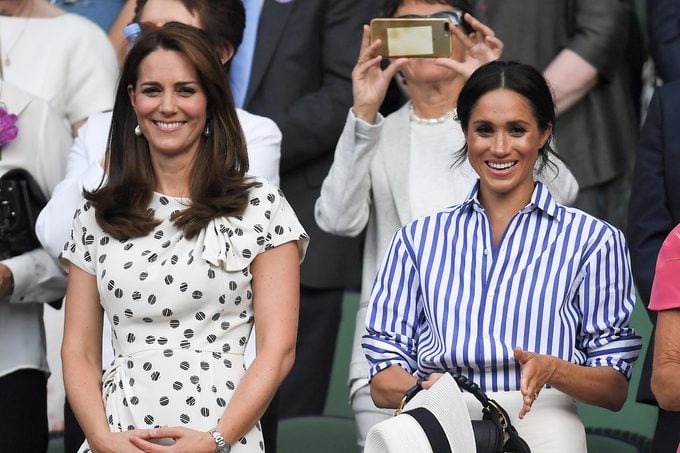This Is the Difference Between a Princess and a Duchess
Updated: Mar. 15, 2023
Is it possible to be both?

If Disney movies taught us anything, it’s that when you marry a prince, you become a princess. So it may seem strange that when Kate Middleton and Meghan Markle married into the royal family, we were all expected to call them duchesses. Obviously, Princess Kate and Princess Meghan sound much better. That got us thinking, how do you become a princess, anyway? And what makes them different from duchesses? Beginners should check out this chart that breaks down the royal family tree.
It turns out, there are two ways to become a British princess: to be born the daughter of a prince, or to marry one. On top of that, only those born into the royal family can use the title princess (or prince, for that matter) before their name. And those things don’t guarantee it either; for instance, despite being the child of a prince, Harry and Meghan’s baby won’t get a royal title at all.
It’s confusing, because while Kate Middleton is not Princess Kate—her title is Catherine, Duchess of Cambridge—she is a princess. On her wedding day, she took on her husband’s title, making her Princess William of Wales, in addition to Her Royal Highness, Duchess of Cambridge. Prince George’s birth certificate also lists her official occupation as Princess of the United Kingdom. Similarly, Meghan, Duchess of Sussex, could be called Princess Henry of Wales. Here’s why her title, Duchess of Sussex, is so meaningful, though.
This is also the reason why Prince Andrew’s daughters Beatrice and Eugenie are princesses, but the daughter of Princess Anne, Zara Phillips, is not. A child’s parents can also decide against bestowing the title upon their children, which is why Prince Edward’s daughter, Louise Windsor, is a lady instead of a princess. The BBC writes that Prince Edward and his wife decided against the title. Even if Prince Edward has a new title of the Duke of Edinburgh, himself.
After the royal titles of king, queen, prince, and princess come the five noble ranks: duke and duchess (the members of nobility that rank right below the monarch), marquess and marchioness, earl and countess, viscount and viscountess, and baron and baroness. These nobles are referred to as lords and ladies (the exception being dukes and duchesses, who are referred to as “Your Grace”), according to Merriam-Webster. Princes and princesses often hold dukedoms.
Of course, the Queen has free rein over all of this. “The monarch may offer to bestow a royal title upon his or her daughter’s children,” says Lucy Hume, associate director of Debrett’s, to Town and Country. “For Peter and Zara Phillips, the Queen offered to give them a royal title when they were born, but Princess Anne and Captain Phillips opted to decline this offer.” The moral of the story is that royal titles are a complicated business—but if you want to learn more, find out exactly how the most famous royals each got their titles.
